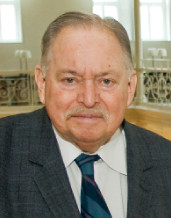Top Qs
Timeline
Chat
Perspective
1994 Quebec general election
Canadian provincial election From Wikipedia, the free encyclopedia
Remove ads
The 1994 Quebec general election was held on September 12, 1994, to elect members to the National Assembly of Quebec in the province of Quebec, Canada. The Parti Québécois, led by hard soverignist Jacques Parizeau, defeated the incumbent Quebec Liberal Party, led by Premier Daniel Johnson Jr.
Johnson had succeeded Robert Bourassa as Liberal leader and Premier. Both his father, Daniel Sr., and brother, Pierre-Marc, had previously served as premiers of Quebec as leaders of different parties.
The election set the stage for the 1995 Quebec referendum on independence for Quebec from Canada. The referendum would see the PQ government's proposals for sovereignty very narrowly defeated.
Mario Dumont, a former president of the Liberal party's youth wing, and then leader of the newly formed Action démocratique du Québec, won his own seat, but no other members of his party were elected.
In Saint-Jean, there was a tie between incumbent Liberal candidate Michel Charbonneau and PQ candidate Roger Paquin. A new election was held on October 24 and was won by Paquin by a margin of 532 votes.[1]
Remove ads
1992 redistribution of ridings
The Commission de la représentation électorale performed a redistribution in 1992, which maintained the number of seats in the National Assembly at 125 for the next general election, making the following alterations:[2]
Remove ads
Candidates
Party for the Commonwealth of Canada
The Party for the Commonwealth of Canada (also known as the Party for the Republic of Canada) fielded eighteen candidates, none of whom were elected.
Mercier
Julie Laliberté received 173 votes (0.56%), finishing seventh against Parti Québécois candidate Robert Perreault.[3]
Rosemont
Normand Bélanger ran for the Commonwealth Party in two federal and two provincial elections. In addition to supporting Lyndon LaRouche's theories, he also called for classical music to be taught starting at the primary grades in the Quebec public school system.[4]
Remove ads
Results
- Results of Unity Party included in 1989 for comparative purposes.
Vote and seat summaries
Ternary plots - shift of electoral support (1989-1994)
Synopsis of results
- including spoilt ballots
- The incumbent Neil Cameron (Equality Party) received 2,415 votes
- André Arthur came in second, with 9,464 votes
- The incumbent Gordon Atkinson (formerly of the Equality Party) received 1,628 votes
- Results for byelection held on October 24, 1994. Initial vote ended in a tie, which was declared void.
- Richard Holden was previously elected under the Equality Party banner in Westmount, before becoming a péquiste in 1992.
- = open seat
- = turnout is above provincial average
- = winning candidate was in previous Legislature
- = incumbent had switched allegiance
- = previously incumbent in another riding
- = not incumbent; was previously elected to the Legislature
- = incumbency arose from byelection gain
- = other incumbents renominated
- = previously an MP in the House of Commons of Canada
- = multiple candidates
Comparative analysis for ridings (1994 vs 1989)
- Drouilly, Pierre (December 4, 2017). "Élections québécoises de 1994". donneesquebec.ca. Atlas des élections au Québec.
- Drouilly, Pierre (December 4, 2017). "Élections québécoises de 1989". donneesquebec.ca. Atlas des élections au Québec.
Analysis

Remove ads
See also
References
External links
Further reading
Wikiwand - on
Seamless Wikipedia browsing. On steroids.
Remove ads






